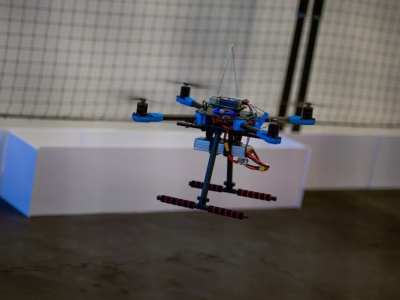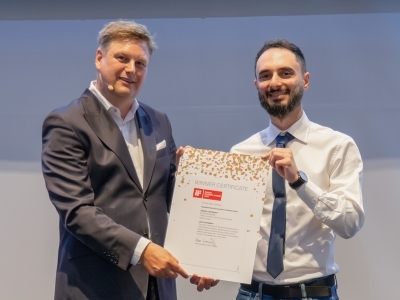Professors Ravi Prakash of the Department of Electronics and Fateme Rajabiyazdi of the Department of Systems and Computer Engineering are among 13 Carleton researchers who have been awarded a combined total of $1.24M through the Canada Foundation for Innovation’s John R. Evans Leaders Fund (JELF), a critical strategic investment tool designed to help institutions attract and retain top researchers.

Professor Ravi Prakash
Ravi Prakash – Aerosol Jet Printed Nano Sensor Platforms for Point-of-Care Diagnostics, and Monitoring Health and Environment
We aim to implement novel Aerosol Jet 3-D printing technique to produce nanoparticle enhanced point-of-care biosensors for non-invasive screening of high impact analytes such as hormones and protein biomarkers, and rapid, isothermal DNA amplification based testing of pathogens in saliva. As reflected by the recent explosion of point-of-care (PoC) technologies, clinical researchers, and healthcare agencies in Ontario, across Canada, and around the world are gaining confidence in the ways PoC systems facilitate decentralized infectious disease testing and monitoring vital bio-analytes in non-invasive bio-fluids (e.g., saliva). Key improvements in PoC biosensors have come from nanoparticle-based 3-D printing methods involving advanced materials that enable intricate geometries, material combinations, and customized integration and packaging. Introduction of nanomaterials in PoC platforms can significantly reduce sample and reagent volumes due to miniaturization, and the large surface-to-volume ratios in the sensing layer can improve reaction rates with analytes and the sensitivity of bioassays. Among the different additive manufacturing methods for using nanomaterials, aerosol jet (AJ) 3-D printers are highly sought-after instruments that use a stream of aerosolized droplets of nanomaterials to deposit 2-D and 3-D structures with high precision, over uniform and non-uniform surfaces. We are requesting support to purchase an AJ printer to develop the next generation of non-invasive PoC technologies for the detection of high impact analytes in saliva and exhaled breath. The requested infrastructure will also enable direct printing of unique functionalities, including temperature control for PoC diagnostics, and of nanosensors onto food packaging for tracing food toxins. This work will position Ontario as a leader in the field of PoC technologies, a US$40.6 billion global industry in 2021, which is projected to grow at a rate of 10.92% to as much as US$103.2 billion by 2030.

Professor Fateme Rajabiyazdi
Fateme Rajabiyazdi – Multitouch Displays for Collaborative Clinical Decision-Making
Our goal in this project is to build a simulated clinical hospital room equipped with large multi-touch, high-resolution displays to develop interactive and collaborative data-centric systems to help clinicians and patients make health-related decisions. In 2021, the Ontario Medical Association announced five priority areas to improve healthcare for Ontarians. One of these areas emphasized providing all patients access to a team of clinicians and linking them digitally so all clinicians involved can review and share relevant patient health information quickly and efficiently. This emphasizes the particular importance of having all of a patient’s health data at hand when making decisions about and planning for patient care. Current technology, procedures, software, and the physical setting of clinical rooms, impose several challenges that hinder effective information sharing and collaboration. Displays in clinical rooms, such as desktop monitors, are often small and thus ill-suited to presenting large complex medical data in a single view. They are also typically unable to support direct manipulation. In fact, there is a dire need for innovative systems that seamlessly integrate, display, and allow for the manipulation of patient health data. Previously, large interactive surfaces have shown promise in capturing a holistic view of large data, participatory planning, collaboration, and data-driven discussion. We are consequently requesting three large high-resolution multi-touch displays to allow us to design and develop systems whereby patients and clinicians with varying expertise can review and manipulate data collaboratively. The systems we design with the requested displays will provide a platform to empower patients to become more involved in their own health decisions and to enhance clinicians’ experiences when reviewing patients’ data amongst themselves, leading to more efficient clinical decisions, fewer errors, and better healthcare for Ontarians.
Thursday, August 31, 2023 in Competitions and Awards (External), Electronics, Health, Research, Systems and Computer Engineering, Women in Engineering & IT
Share: Twitter, Facebook



